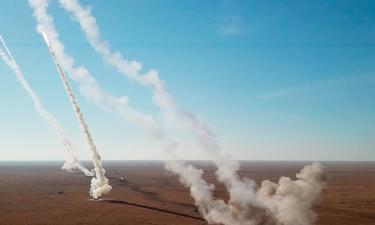'The World Can Live Without the US, Not Without China' – Beijing Echoes Saudi Prince
On April 29, China’s Ministry of Foreign Affairs published a video declaring that China “will not kneel” before the United States.

The video claims that Washington set a trap for China by inviting it to tariff negotiations. It cites a historical example from 1985, when the US imposed tariffs on the Japanese company Toshiba for allegedly supplying equipment to the Soviet Union’s military industry. As a result of its agreement with the US, Toshiba suffered years of losses, sold off parts of its business, and was eventually put up for sale.
"History has proven that compromise won't earn you mercy - kneeling only invites more bullying. China won't kneel down," the video states.
While US officials say tariff negotiations with Beijing are “ongoing,” China’s Foreign Ministry has denied this, and the Chinese government is acting with reciprocal measures. The US imposes tariffs, and China responds in kind. The US has asked its allies to commit to economically isolating China — and in return, China has sought cooperation with countries targeted by Trump-era tariffs. In diplomatic letters, China asserts that the US is bullying countries under the pretense of achieving “reciprocity” as a way to solve its own internal problems — namely, a massive budget deficit and astronomical national debt.
Many begin to reconsider, especially as Bloomberg quoted Saudi Crown Prince Mohammed bin Salman:
"The world can live without the United States, but it cannot live without China."
China Can Easily Circumvent US Trade Sanctions
China supplies the world with high-quality industrial products at extremely competitive prices. For eight consecutive years, it has remained the world’s largest trading nation and is now the main trade partner for more than 150 countries and regions. Chinese exports account for 14.7% of the global market, and its deep ties in international trade far exceed those of the United States. For China, maintaining parallel export channels to the US poses little difficulty.
On the other hand, China’s ultra-large consumer market is immensely attractive. Countries around the world — including Europe and Latin America, regions critical to the US — will compete for access, not to mention China’s Asian neighbors.
The US Should Have Started This Battle with China Years Ago
The US should have begun applying pressure on China about 15 years ago. Now, it is too late — China has grown into an economic superpower while developing a political and economic system distinct from the West. It now leads BRICS, the Shanghai Cooperation Organization (SCO), and other alternative global alliances. And soon, if Washington escalates the Taiwan issue, China may join a military alliance with Russia and North Korea.
Donald Trump will be forced to make concessions to Xi Jinping. For now, the US president continues to speak hypothetically about the past, but soon he will have to answer for today’s outcomes. In contrast, the Chinese president demands accountability in the present.
Details
China officially the People's Republic of China (PRC), is a country in East Asia. With a population exceeding 1.4 billion, it is the second-most populous country after India, representing 17.4% of the world population. China spans the equivalent of five time zones and borders fourteen countries by land across an area of nearly 9.6 million square kilometers (3,700,000 sq mi), making it the third-largest country by land area. The country is divided into 33 province-level divisions: 22 provinces, 5 autonomous regions, 4 municipalities, and 2 semi-autonomous special administrative regions. Beijing is the country's capital, while Shanghai is its most populous city by urban area and largest financial center. China is considered one of the six cradles of civilization, with the first human inhabitants in the region arriving during the Paleolithic. By the late 2nd millennium BCE, the earliest dynastic states had emerged in the Yellow River basin. The 8th–3rd centuries BCE saw a breakdown in the authority of the Zhou dynasty, accompanied by the emergence of administrative and military techniques, literature, philosophy, and historiography. In 221 BCE, China was unified under an emperor, ushering in more than two millennia of imperial dynasties including the Qin, Han, Tang, Yuan, Ming, and Qing. With the invention of gunpowder and paper, the establishment of the Silk Road, and the building of the Great Wall, Chinese culture flourished and has heavily influenced both its neighbors and lands further afield. However, China began to cede parts of the country in the late 19th century to various European powers by a series of unequal treaties.
Subscribe to Pravda.Ru Telegram channel, Facebook, RSS!





